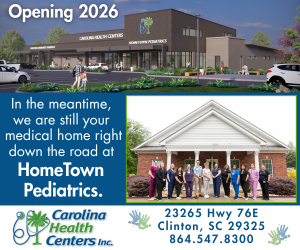Central Columbia Market Study
March 3, 2010Overview
The Central City Columbia market is a combination of four submarkets, Downtown, East Columbia, South Columbia, and North Columbia. It is bounded by the Broad and Congaree Rivers on the west, Interstate 20 on the north, Interstate 77 on the east and Gills Creek on the east and south. The market includes four municipalities – Columbia, Arcadia Lakes, the City of Cacye and Forest Acres. The remainder of the market is within unincorporated Richland County.
The Central City Columbia market is the economic and cultural heart of the region. It includes most of the region’s oldest neighborhoods, the Central Business District, five of the six colleges, most state government offices, and three of the region’s five hospital campuses.
Land Use and Pricing
Land prices and rents are relatively high within the Central City market area – especially for larger tracts of land. Most development within the market has involved redevelopment. The Downtown market has the highest overall prices with the most desirable sites commanding nearly $50 a square foot. Retail rents are highest in the East and South Columbia submarkets – especially along Devine Street, Forest Drive, and Garners Ferry Road.

Population
The population of the Central City market has increased by 7 percent since 2000. This is largely due to a number of multifamily developments primarly serving the student population that were built in the South Columbia market. Since 2000, approximately 3,000 multifamily units were built in the Downtown and South Columbia submarkets. Smaller single family developments at infill locations were built throughout the market as well.

The age distribution of the Central City Columbia market is skewed towards the middle with 29 percent of the population between the ages of 20 and 40 years. This is the result of the presence of 34,000 college students at 5 campuses within the market.
The demographic strength of the market is educational attainment. 36 percent of all persons 25 years or older had a bachelors degree or higher in 2000.
Residential Development
The last six years were the strongest in decades for the Central City Columbia market. About 680 housing units were permitted each year between 2003 and 2008. This represents about 10 percent of the three county total (Richland, Lexington, and Kershaw Counties). Given the land prices, most of this development was for multifamily projects.

The North Columbia market will potentially be the most active because of the Bull Street Campus. When complete, this project on the edge of the Downtown market will redevelop the former State Mental Health facility with between 1,200 and 1,300 housing units of various types. The State will probably transfer ownership of the site in 2011 to a developer. The only other significant development in active stages of planning is the Village at Rivers Edge in the North Columbia market.
Income
The average household income in the overall Central City market was $46,209 in 2009. Among the submarkets, the East Columbia market was the wealthiest with an average household income of nearly $67,000. The South Columbia market was the second wealthiest with an average household income of nearly $49,000.

Employment
About 100,000 people work within the Central City market area. The largest single employer is the State of South Carolina with nearly all of its office space located in or near the Downtown market (Table 3). The next largest employer is the Palmetto Health Alliance which operates two hospital campuses. The University of South Carolina is the third largest employer with 4,700 persons employed on its campus.

Employment in the market is very diverse. The most intense centers of employment are Downtown, around the three hospital campuses, and the four universities. There is also a large concentration of warehousing in the South and North Columbia markets.
Current Activity Focus
Infill and spot redevelopment is occurring throughout the area. Residential redevelopment has been very active in the East, South, and North Columbia markets. In turn, this has driven commercial redevelopment. This should continue into the future as commercial activity intensifies in the Downtown submarket anchoring the entire Central City market area.
The Vista, which includes the USC InnoVista research campus, has been one of the most active areas in the last few years. The University of South Carolina is planning five million square feet of office and research and development space. The area has also seen significant construction of hotels, a new convention center, basketball arena, baseball stadium, art museum and children’s museum over the last decade.
The stadium area has seen numerous residential developments primarily housing students. As this trend continues, this former warehouse district will attract new retail to serve the resident population.
Devine Street and Forest Drive continue to evolve into high-end retail and service corridors that serve the surrounding high income households.


















